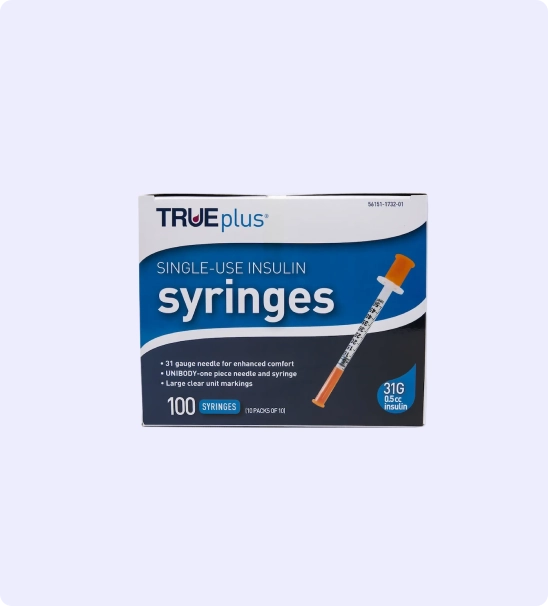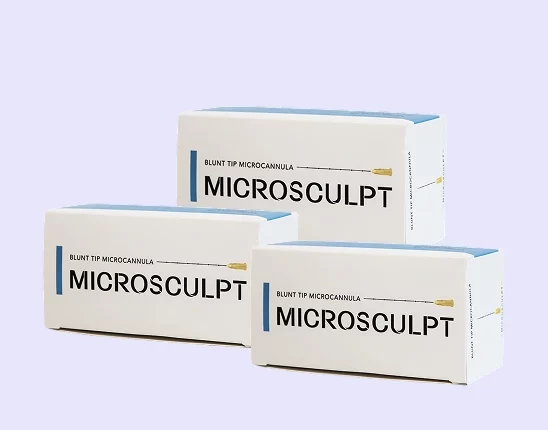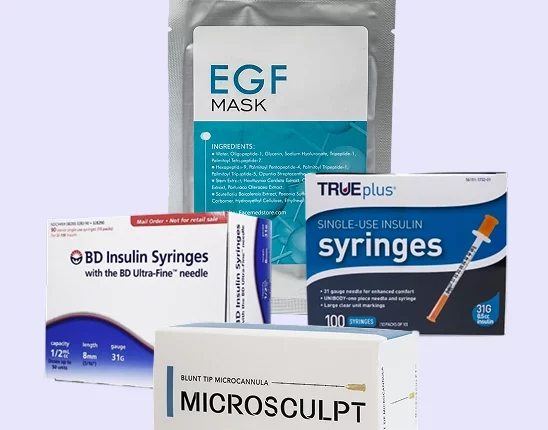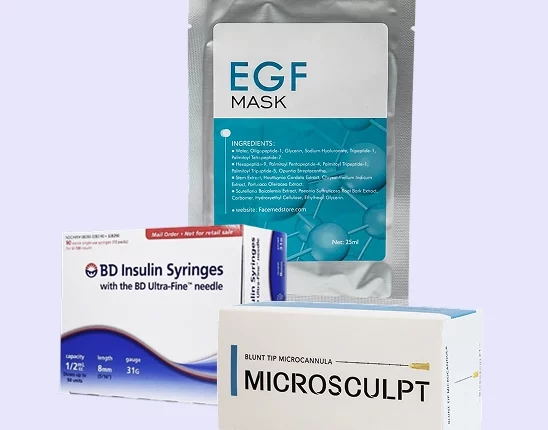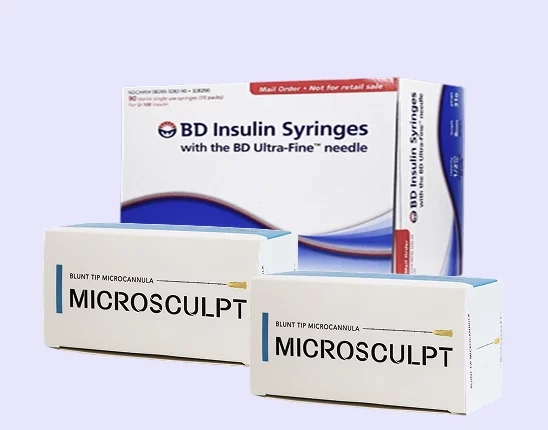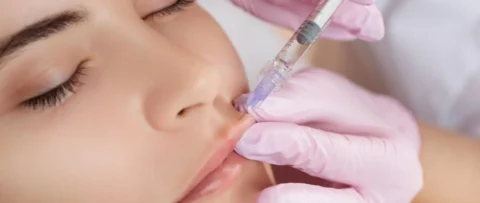Ask anyone what their least favorite medical procedure is, and you’re bound to get a chunk of people answering with injections. Even some adult patients are uncomfortable with injections. From blood extractions, to vaccines, to cosmetic injections, the thought of piercing one’s skin with a needle is an uncomfortable thought that evokes feelings of pain and, for some, an actual phobia.
However, those who have had multiple injections in their life may find that the level of discomfort triggered from injections are not the same. If you’re wondering why some injections hurt more than others, the answer lies in multiple factors during the procedure. And if your needle fears are preventing you from getting the dermal fillers you need to enhance your appearance, here’s why you should consider getting fillers with microcannulas over your typical needles.
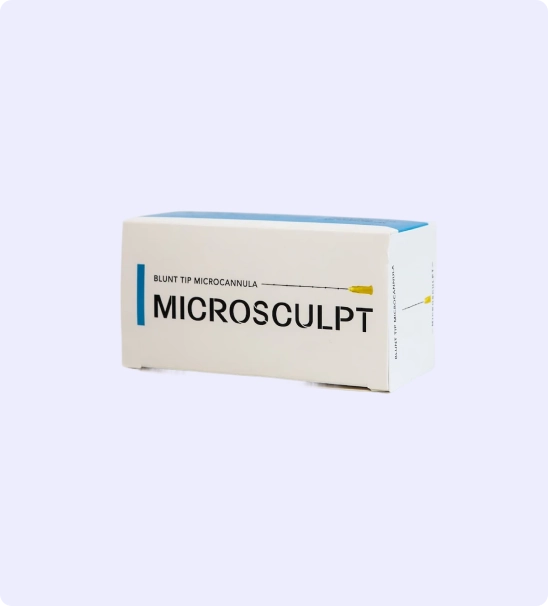
Injections Your Patients Will Love! Code “20OFF” Takes 20% off Your First Order!
Microcannulas are a tool that every great injector must master. Patients want quick results with no downtime. Our microcannulas are high quality and a fraction of the price of our competitors!
You can create an account here.
Factors Trigger Pain Responses During an Injection
There are multiple reasons why certain injections hurt more than others. These can include the following:
Needle Type
Needles are responsible for puncturing your skin, so this is the main factor why certain injections hurt. Size and sharpness are the main culprits for causing a certain level of discomfort. In general, a longer, duller, and larger needle is more likely to hurt when injected to your skin.
Needle Length
In terms of needle length, there are four injection types: intradermal injection, subcutaneous injection, intramuscular injection, and intravenous injection. These four can reach into different layers of the skin, which can affect the pain levels you experience. While intradermal, intravenous, and subcutaneous are roughly the same level of pain, intramuscular injections can be more painful than the three.
Intradermal injections are injected into the dermis, making it the least invasive of the four. This is only often used for allergy tests, since the body’s reaction to the injected substance is most visible closest to the surface.
Intravenous injections are the next least invasive, reaching the veins starting in the dermis layers, though it can also be injected into the deeper veins in the muscles (which is more painful). These injections are often used to deliver medication, fluids, and nutrition for patients where orally consuming these substances are not possible at the time. These inherently cause some amount of pain, which is why medical professionals opt to deliver these substances orally rather than injection when necessary.
A subcutaneous injection reaches the subcutis layer of the skin, where most of your fatty tissue is stored. Many injectable medications are injected into this layer because the subcutaneous tissue quickly absorbs the drugs and releases it gradually. For cosmetic procedures like Botox injections, some medical professionals inject Botox deeper as an intramuscular injection, though some inject Botox into the subcutaneous tissue above the muscle to help diffuse the toxin into the muscle.
Intramuscular injections are the deepest injections and have the longest needles. Your muscles are home to more abundant and larger blood vessels, making injections more easily absorbed compared to the other injections as it accesses your blood flow directly. These are most commonly used for medicines like morphine and vaccines like flu shots or the COVID-19 vaccine, since these need to be distributed throughout the body quickly.
These are the most painful injections for many reasons, including the way it is administered (the needle must puncture the skin quickly at a 90-degree angle), the muscle damage these injections cause, your body’s normal responses to injections, and your immune response.
Needle Sharpness
The sharper the needle, the easier it is to enter the skin. Syringes with lower quality have needles that aren’t as sharp, so patients are likely to feel more pain as dull needles require more force to puncture the skin.
And even if needles are sharp, there are some practices that can dull the needle before it enters the skin. For example, if a medical professional has to draw out the medicine from an injectable vial or use a rubber tube to draw out the medicine, the needle has to be injected through a rubber cover, which can dull the needle.
Fear of Needles
Did you know that the fear of needles can make injections even more painful than they really are? This is due to a number of ways your fear manifests itself physically, which can trigger involuntary responses that can heighten your fear sensitivity.
- When your body tenses up. This is especially true when you tense up the part of your body that’s about to be injected. Taking deep breaths can be a good way to ease up and calm down before an injection.
- Increased sensitivity to pain. This can be genetic or developed. When you’re anticipating pain, this can cause your nerves to expect pain levels that are worse than what the actual injection really is.
- High anxiety level, blood pressure, and heart rate. When you experience a high anxiety level due to injections, your body is stressed and causes your brain to respond accordingly. This can trigger your body to produce more cortisol. This hormone can increase pain sensitivity and trigger an inflammatory response, which can make injections feel more painful than it really is.
Consistency of Injectable Medicine
Factors like consistency, pH level, and temperature can make certain medicines more painful once injected into your body. Thicker medicines can be difficult to pass through the deeper layers, which can make it painful when dispensed. While most medicines are pH balanced, injections like flu shots, antibiotics, and Botox lean more towards the acidic side and can sting when administered.
Certain medications can also be painful due to their ingredients. Potassium, for example, can cause a burning sensation when injected intravenously.
Injecting into Muscle
Earlier, we discussed how intramuscular injections were widely-used to get medication into different blood vessel types. But one of the main reasons medical professionals use intramuscular injections is to avoid first-pass metabolism.
When taking oral medication, by the time the drug makes its way to the small intestine to be absorbed, the potency and concentration of the drug has been reduced significantly. Many oral over-the-counter medicines can still have an effect on your body after this metabolism, but some drugs lose so much potency that they’re no longer effective by the time the small intestine distributes it into your bloodstream.
As an alternative, intramuscular injections bypass the digestive system and instantly delivers medicine into your bloodstream. However, this process can make it the most painful type of injection because of what it does to your muscles.
Unlike skin where you’re piercing soft tissues, muscles are composed of tight fibers. A larger needle is used for intramuscular injections, and when it reaches the muscle layer, the needle can break muscle fibers, which can trigger a pain response. On top of this, broken muscle fibers can trigger your immune response to cause inflammation and result in injection site pain. This can cause additional pain and adverse reactions such as redness and swelling. These are normal responses to injections, and the injection area can feel sensitive days after injection.
Why Microcannulas Are Better
It’s important to remember that pain perception is subjective to all patients. However, if you have a history of painful injections, you might be discouraged from undergoing cosmetic procedures like dermal fillers because of the potential pain you might experience.
Fortunately, microcannulas offer a more comfortable experience compared to your typical sharp needles.
What are Microcannulas and How Do They Work?
Instead of sharp, non-bendable needles, syringes can be connected to microcannulas, a thin and flexible tube with a round blunt tip. Microcannulas come in various lengths, allowing doctors more reach as necessary.
At the start of a dermal filler procedure, a medical professional sterilizes your treatment area with an alcohol pad and then creates a minute hole in your skin using a sharp needle. Because of microcannulas’ blunt tip, it cannot penetrate the outer layer of skin on its own. The needle used is sharp enough to puncture the skin with minimal pain, but it only goes deep enough to provide the microcannula enough access to your skin. Your doctor may even use a topical anesthetic to help reduce the pain.
Afterwards, the microcannula is inserted into the entry point and moved to the area that requires filler injections. Because of its flexibility, the microcannula does not break connective tissues. Instead, it slides within the spaces connecting the dense tissue, causing little to no pain compared to a needle.
Benefits of Microcannulas
If you’re a patient interested in getting dermal fillers but are uncomfortable at the thought of needles, finding a doctor that uses microcannulas can provide you with a better experience. Microcannulas can offer these advantages compared to the usual dermal fillers that use hypodermic needles.
Pain Mitigation
Patients who have used microcannulas report a much more comfortable experience. Rather than multiple injections with a needle (which can cause the needle to go dull), only one point of entry is needed for nearby points that require fillers. After that entry point is made (sometimes with a topical anesthetic to reduce the pain even further), microcannulas feel more like pressure on the patient’s skin rather than a sharp stinging pain.
Sharp injections can cause skin tearing, bruising, and swelling. It can also disturb a blood vessel, which can cause pain during and after the procedure while the skin tissue repairs itself.
Better Accuracy for Fillers
Unlike sharp needles where movement is limited to angular direction, microcannulas are flexible and allow doctors more movement to fill in the right places in your cheeks, lips, nose, and other parts of your face that need fillers. More accurate fillers can result in a more successful procedure that can have smoother, more natural-looking results.
Little to No Downtime Needed
Sharp needles can tear skin tissue and cause bleeding and bruising. While technically patients with dermal fillers do not need downtime, the pain from needles may require you a day or two to recover from injection pain. Microcannulas, on the other hand, reduce the chance of swelling and bruising. This means little to no downtime after your procedure.
Get Microcannulas for Your Patients Today
-
 Microcannula Multi-Gauge Precision Set
Microcannula Multi-Gauge Precision Set -
 Microcannula Complete Injection System
Microcannula Complete Injection System -
 Microcannula Size Progression Training Kit
Microcannula Size Progression Training Kit -
 Microcannula Professional Starter Kit
Microcannula Professional Starter Kit -
 Microcannula Volume Practice Pack
Microcannula Volume Practice Pack -
 23 gauge 50 mm (2 inch) Microcannulas
23 gauge 50 mm (2 inch) Microcannulas -
 22 Gauge 100 mm (4 inch) Microcannulas.
22 Gauge 100 mm (4 inch) Microcannulas. -
 27 Gauge 38 mm (1.5 inch) Microcannulas
27 Gauge 38 mm (1.5 inch) Microcannulas -
 25 Gauge 38 mm (1.5 inch) Microcannulas
25 Gauge 38 mm (1.5 inch) Microcannulas
Injection pain can vary between patients. Sometimes, however, the pain can be so distressing that it dissuades adult patients who could benefit from treatments like dermal fillers from getting the procedure done. With microcannulas, patients can have a more comfortable experience without having to endure multiple injections to their face.
FACE Med Store supplies medical tools and supplies to cosmetic and wellness practices. Our quality products are priced competitively at a fraction of the typical cost, allowing our partners to improve profitability and business operations without sacrificing quality and customer satisfaction.
Provide a better dermal filler procedure for your clients. Check out our range of microcannulas for sale at our online store today.
